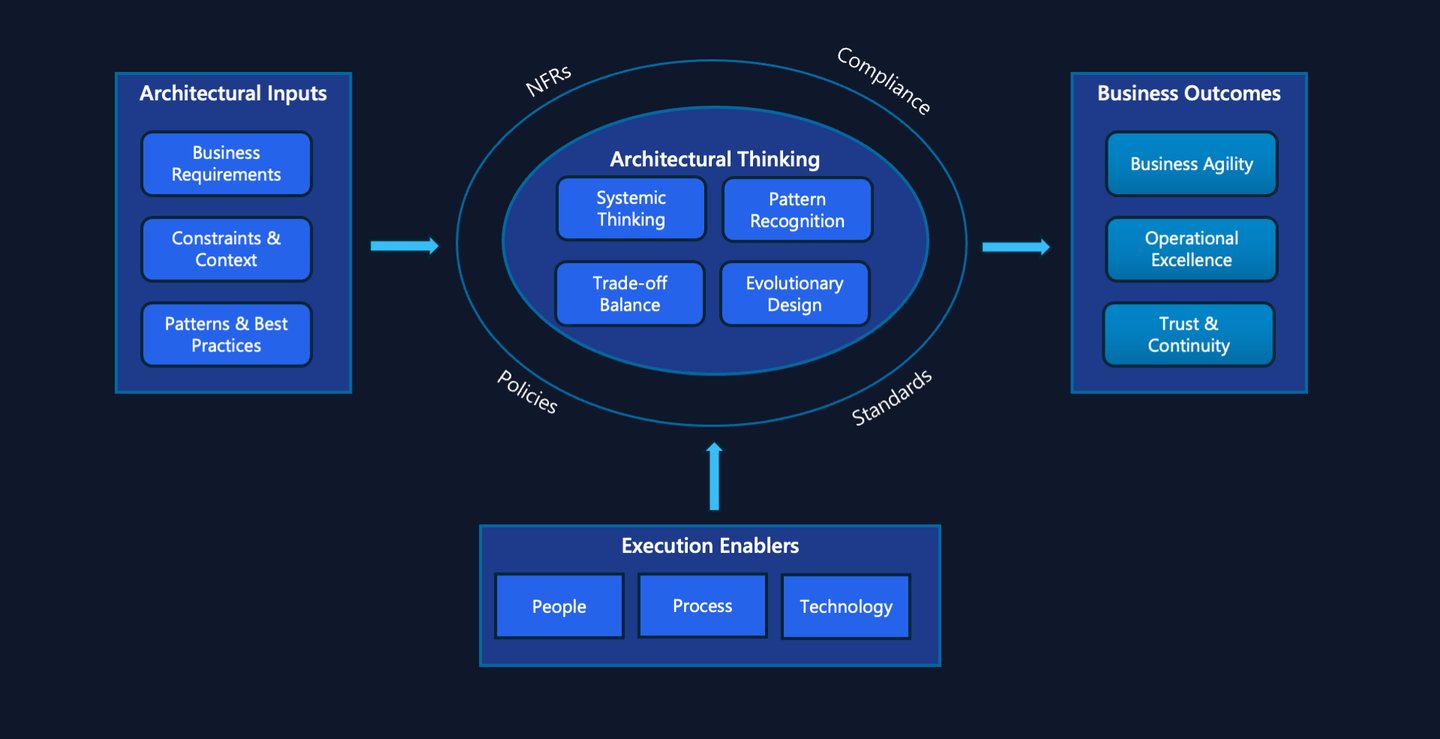
Designing with Intent — in Systems, Work, and Life
The core principles of architecture don’t fade with technology.
Loose coupling, modular design, observability, and scalability — the same ideas that shaped distributed systems decades ago now power the evolution of AI, automation, and intelligent platforms.
This space explores how enduring architectural thinking continues to guide the systems we build — and the way we think.
Architecture Is the Art of Thinking in Systems
Good architecture isn’t just about technology — it’s about clarity of intent.
Every great system begins with the right inputs: a deep understanding of business context, trusted patterns, and proven best practices that guide purposeful design.
At its heart lies architectural thinking — the discipline of connecting the dots, balancing trade-offs, and designing for evolution. Architecture isn’t static; it’s how we think about change before it happens.
Real architecture thrives through its enablers — people, process, and technology — working together in harmony. When strengthened by governance and non-functional discipline, these enablers turn intent into enduring capability.
Done right, architecture delivers what truly matters: business agility, operational excellence, and lasting trust.
It’s not a one-time design — it’s a living system that adapts, evolves, and continues to guide every decision long after the first blueprint is drawn.


Meet Anand Saranath
Enterprise Architect | Thinker | Explorer of Systems & Stories
I’m a technologist by trade and an architect by intent. Over the years, I’ve learned that the real art of architecture isn’t in blueprints or tools — it’s in connecting purpose with design.
My work spans system architecture, AI strategy, and platform engineering — but what I enjoy most is simplifying complexity and helping teams think systematically.
Beyond technology, I write about leadership, learning, and the small philosophies that shape how we build, work, and live.
👉 You’ll find reflections here that blend architecture, curiosity, and creativity — from agentic AI to music, mindfulness, and design thinking.
When I’m not thinking about systems, I’m usually exploring Ilayaraja’s compositions or trying to capture light through a camera lens

